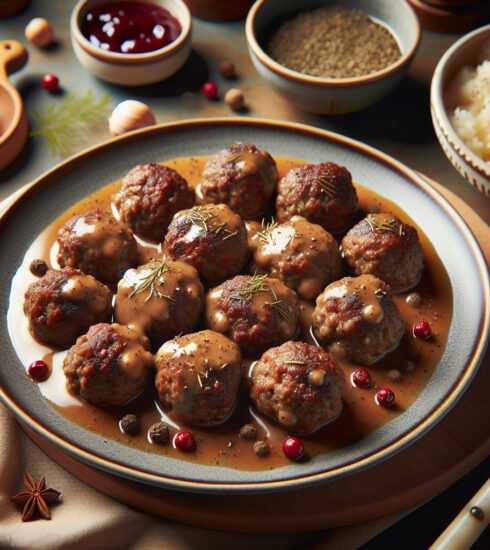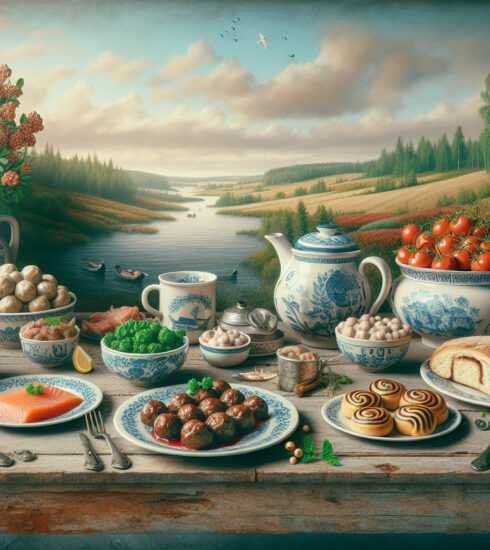Fika: Discover the Delightful Tradition of Swedish Coffee Break and Its Scrumptious Delicacies
Fika: The Swedish Coffee Break Tradition and Its Delicacies
Introduction
In Sweden, there is a beloved tradition known as fika. It is not simply a coffee break, but a cultural phenomenon deeply ingrained in the Swedish way of life. Fika is a moment of relaxation, an opportunity to slow down and enjoy a cup of coffee or tea, often accompanied by delicious pastries or sandwiches. This tradition is so significant in Sweden that it has even made its way into workplace routines and social gatherings. In this article, we will explore the origins, significance, and delicacies associated with Swedish fika.
The Origins of Fika
Fika is believed to have originated in the late 19th century and early 20th century in Sweden. At that time, coffee became more accessible and affordable to the general population, leading to an increase in coffee consumption. Coffeehouses and tea rooms also began to pop up, providing a space for people to gather and socialize over a cup of coffee. This gave birth to the fika tradition, which quickly spread throughout the country.
The Significance of Fika

Fika is more than just a coffee break; it is a way of life for many Swedes. It provides an opportunity to take a break from work, connect with friends and family, and indulge in delicious treats. Fika is not rushed or hurried; it is a moment of relaxation and reflection. It is a time to savor the flavors, enjoy the company, and appreciate the simple pleasures of life.
The Ritual of Fika
The ritual of fika involves taking a break from work or daily activities to sit down and enjoy a cup of coffee or tea. It is typically accompanied by a pastry or a sandwich. The focus is not just on the beverage but on the overall experience. Swedish fika is often enjoyed with others, whether it’s colleagues in the workplace, friends, or family members. It is a social activity that encourages conversation and connection.
Delicacies of Swedish Fika
Swedish fika is incomplete without its delicacies. These treats are often homemade or sourced from local bakeries, ensuring freshness and quality. Here are some popular delicacies that are commonly enjoyed during fika:
- Cinnamon Buns (Kanelbullar): These sweet, fluffy, and aromatic cinnamon buns are a staple of Swedish fika. They are made with a yeast dough that is filled with a mixture of butter, sugar, and cinnamon, then rolled into a spiral shape and baked to perfection. Cinnamon buns are often topped with pearl sugar for added sweetness and crunch.
- Cardamom Buns (Kardemummabullar): Similar to cinnamon buns, cardamom buns are a popular choice for fika. They are made with a dough flavored with cardamom, a spice commonly used in Swedish baking. The buns are shaped into knots, allowing the cardamom flavor to be evenly distributed throughout.
- Princess Cake (Prinsesstårta): Princess cake is a classic Swedish delicacy that is often served on special occasions or celebrations. It is a layered cake consisting of sponge cake, pastry cream, whipped cream, and raspberry jam, all covered in a thin layer of green marzipan. The cake is usually topped with a marzipan rose.
- Swedish Gingerbread (Pepparkakor): These thin, crisp, and spicy gingerbread cookies are a favorite during the holiday season. They are traditionally shaped into hearts, stars, or figures, and often decorated with icing. Gingerbread cookies are perfect for dipping into a cup of coffee or tea during fika.
- Smörgåstårta: Smörgåstårta is a savory delicacy that is often served during special occasions. It is a layered sandwich cake made with bread, butter, and various fillings such as shrimp, smoked salmon, ham, and cheese. The cake is then decorated with mayonnaise, vegetables, and other garnishes.

Fika in Everyday Life
Fika is not limited to special occasions or social gatherings. It has become an integral part of everyday life in Sweden. It is common for workplaces to have designated fika breaks, allowing colleagues to come together and enjoy a moment of relaxation. In some companies, fika is seen as a way to foster creativity, build relationships, and enhance productivity. It is also a way for Swedes to connect with nature, as fika often takes place outdoors in parks or gardens.
External Link
To learn more about the history and cultural significance of fika, you can visit the Wikipedia page on Fika.In Conclusion
Swedish fika is not just a coffee break, but a cherished tradition that promotes relaxation, social connection, and indulgence in delicious treats. It provides a moment of respite from the busyness of daily life and encourages Swedes to appreciate the simple pleasures. Whether it’s enjoying a cinnamon bun with colleagues during a fika break at work or sipping a cup of coffee with friends on a sunny afternoon, fika is a beloved Swedish tradition that continues to bring joy and comfort to people’s lives. So, the next time you find yourself craving a moment of relaxation, why not embrace the fika tradition and treat yourself to a cup of coffee and a delectable pastry?







ᐈ Unearthing the Hidden Gems of Swedish Delicacies: A Sensory Journey through Sweden's Flavors. Sweden: Discover, Enjoy, Inspire.
9 months ago[…] If you want to learn more about the Swedish fika tradition and discover some delicious fika recipes, check out the article available at https://sweden-trip.fun/culinary-delights/swedish-fika/. […]